Educational Science Crafts that Kids Will Love
Are you ready to embark on a thrilling journey where science meets creativity? Educational science crafts are not just a way to keep kids entertained; they are a gateway to understanding the wonders of the world around us. Imagine your child mixing colors, building structures, or even creating their own mini volcanoes—all while learning fundamental scientific principles! These hands-on activities are designed to be both fun and educational, making them the perfect addition to any child's learning experience.
Science crafts encourage children to explore, experiment, and express their creativity. They provide a unique opportunity for kids to engage with scientific concepts in a way that is tangible and relatable. Think about it: when children create something with their own hands, they are more likely to remember the underlying scientific principles behind their projects. It’s like turning abstract ideas into something they can see, touch, and interact with. This is the beauty of integrating crafts with science—it's not just about making a mess; it's about making memories and learning in the process!
In this article, we will delve into a variety of exciting projects that will not only captivate your child's imagination but also enhance their understanding of key scientific concepts. From simple experiments that can be turned into crafts to nature-inspired projects, we’ve got a treasure trove of ideas that will spark curiosity and foster a love for learning. So, gather your supplies, roll up your sleeves, and get ready for some educational fun that your kids will absolutely love!
- What age group are these science crafts suitable for? Most science crafts can be adapted for various age groups, but generally, they are great for children aged 5-12 years.
- Do I need special materials to get started? Not at all! Many science crafts can be done using common household items. We will provide a list of materials needed for each project.
- Are these crafts safe for children? Yes, safety is our top priority. We'll provide safety tips to ensure a fun and secure crafting experience.
- Can these crafts be done indoors? Absolutely! Many of the projects are perfect for indoor activities, especially on rainy days.

Introduction to Science Crafts
Science crafts are an incredible way to spark a child's interest in the world of science while allowing them to express their creativity. Imagine a world where learning feels like play—this is exactly what science crafts offer! By blending the principles of science with hands-on activities, children not only grasp complex concepts but also develop critical thinking skills. These activities can transform mundane lessons into exciting explorations, making the learning process both enjoyable and memorable.
Integrating crafts into science lessons can significantly enhance a child's understanding of various scientific principles. For instance, when kids create a volcano using baking soda and vinegar, they are not just having fun; they are witnessing a chemical reaction in real-time. This tactile experience can solidify their understanding far more effectively than reading about it in a textbook. Plus, the satisfaction of creating something with their own hands can boost their confidence and encourage a lifelong love of learning.
Moreover, science crafts promote fine motor skills and encourage teamwork when done in groups. Children learn to communicate their ideas, share materials, and collaborate on projects, which fosters social skills. As they cut, glue, and assemble their creations, they engage in a form of learning that is both interactive and impactful. The beauty of science crafts lies in their versatility; they can be adapted to suit different age groups and learning styles, making them accessible to all children.
Incorporating science crafts into your child's routine can be as simple as setting aside a few hours each week for creative exploration. You might be surprised at how much they can learn while having fun! So, whether you're a parent looking to enrich your child's education or a teacher seeking to make lessons more engaging, science crafts are an excellent solution. Get ready to unleash your child's inner scientist and artist!
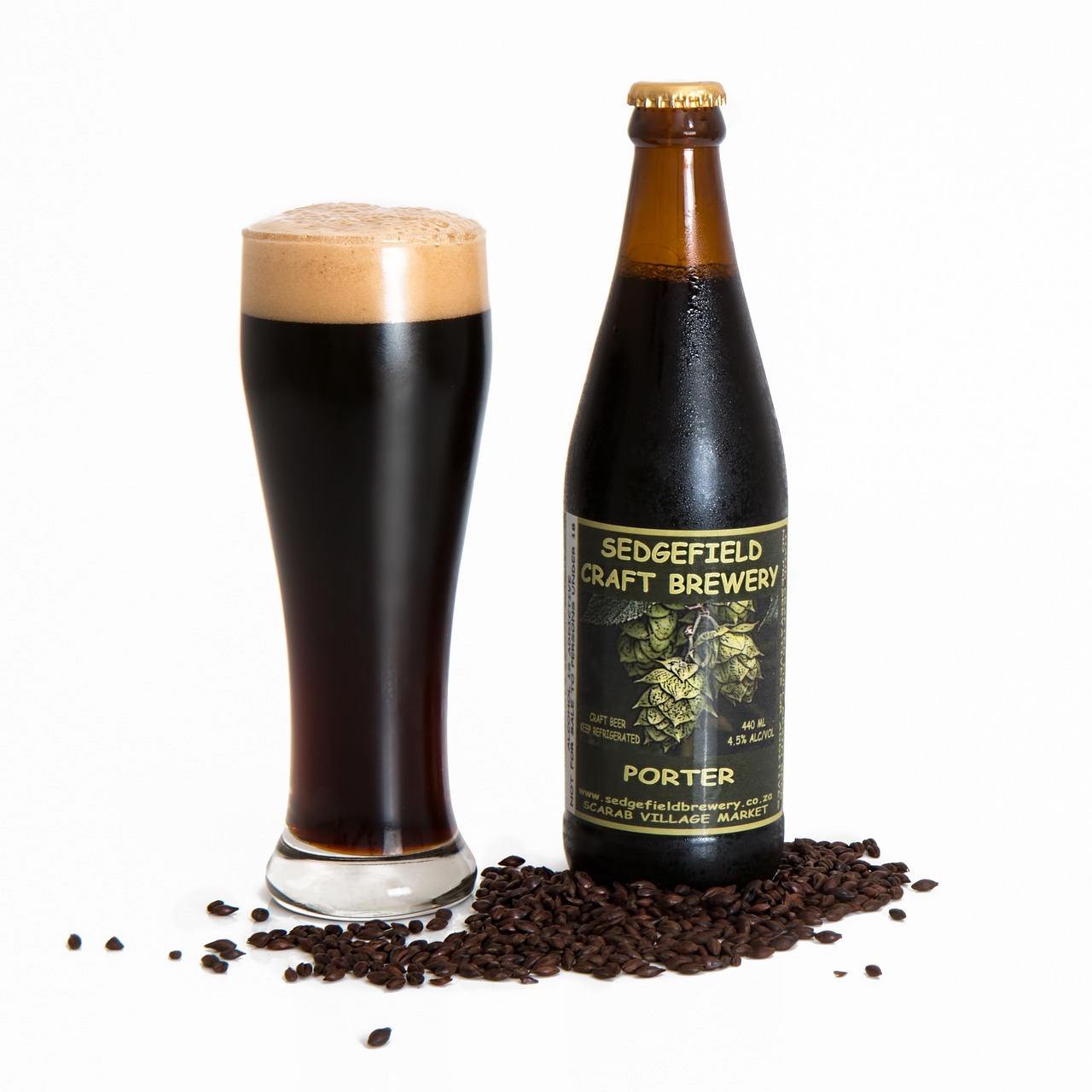
Materials You’ll Need
When embarking on a journey of science crafts, having the right materials at your fingertips is crucial for sparking creativity and ensuring smooth sailing through the experiments. Think of it like preparing for a treasure hunt; you wouldn’t want to set off without your map and compass! Here’s a rundown of some essential supplies that can be used across a variety of projects, making it easier for you to dive into the exciting world of science.
First off, let’s talk about the basics. You’ll want to have a good stock of crafting materials that can be easily found around the house or at your local craft store. Here’s a quick list of some must-have items:
- Glue and Tape: These are your best friends when it comes to sticking things together. Whether you’re building a model or creating a collage, you’ll need these.
- Scissors: A good pair of scissors is essential for cutting paper, string, or any other materials you might be using.
- Markers and Crayons: For adding color and personal touches to your projects, these tools are invaluable.
- Paper and Cardboard: These can serve as the foundation for many crafts, from simple drawings to complex structures.
Now, let’s not forget about the science-specific materials that will really elevate your projects. Depending on the experiments you choose, you might need:
- Baking Soda and Vinegar: Perfect for creating fizzy reactions in your crafts.
- Food Coloring: Great for adding vibrant colors to your science experiments, especially in water-based projects.
- Natural Elements: Think leaves, stones, and twigs. These can be collected during nature walks and are fantastic for eco-friendly crafts.
- Plastic Bottles and Containers: These can be repurposed for experiments like creating mini ecosystems or conducting water experiments.
In addition to these items, it’s a good idea to have a workspace that is organized and safe. A table covered with newspaper or a dedicated craft mat can help keep the mess contained. Remember, a little preparation goes a long way in making the crafting process enjoyable and stress-free!
Finally, don’t overlook the importance of imagination and creativity. While having the right materials is important, it’s your ideas that will truly bring the projects to life. Encourage your kids to think outside the box and use whatever materials they can find to create something unique. After all, the best crafts often come from a mix of planned supplies and spontaneous creativity!
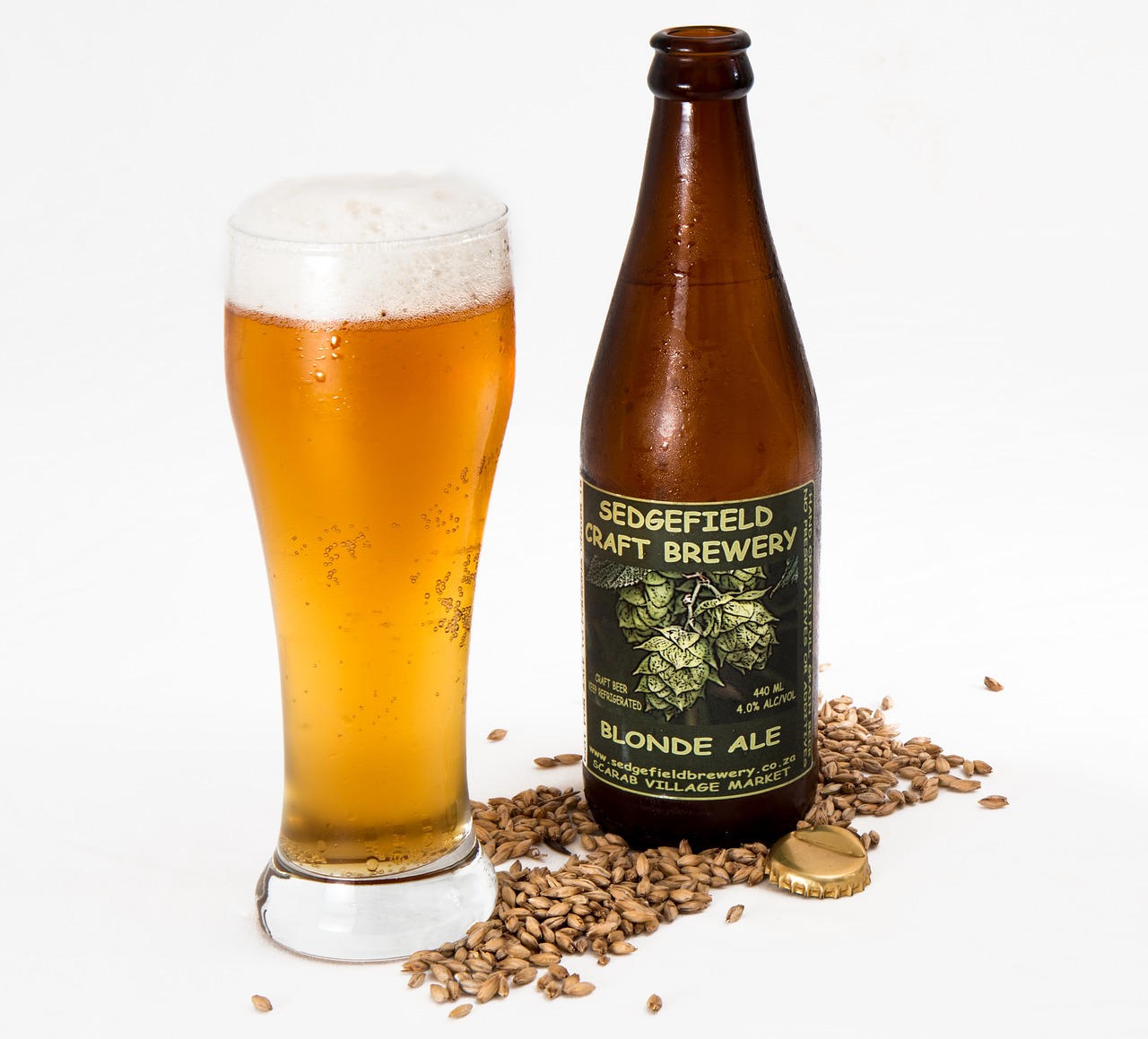
Simple Science Experiments
When it comes to sparking curiosity in kids, are a goldmine! They not only captivate young minds but also serve as a gateway to understanding complex scientific concepts. Imagine a world where children can mix, measure, and observe, all while having a blast! Here are some delightful experiments that can easily be transformed into engaging crafts.
One of the most popular experiments is the classic baking soda and vinegar volcano. This project is not just about making a mess (though that’s part of the fun!); it’s a fantastic way to introduce kids to chemical reactions. Here’s how you can do it:
1. Gather your materials: - Baking soda - Vinegar - Food coloring (optional) - A container (like a plastic bottle) - Tray to catch the overflow 2. Create your volcano: - Place the container on the tray. - Add a few tablespoons of baking soda to the container. - If you want a colorful explosion, mix in some food coloring. - Slowly pour vinegar into the container and watch the eruption!
This experiment not only dazzles with its fizzy eruption but also serves as a brilliant opportunity to discuss acid-base reactions in a fun, hands-on way.
Another exciting project is the rainbow in a jar. This experiment teaches kids about density while creating a beautiful visual display. All you need are some common household liquids: honey, dish soap, water, vegetable oil, and rubbing alcohol. Here’s how to create your own rainbow:
1. Start with a clear jar. 2. Carefully layer the liquids in the following order: - Pour honey first (it’s the densest). - Slowly add dish soap. - Next, add colored water (mix food coloring with water). - Then, pour vegetable oil. - Finally, add rubbing alcohol (colored, if desired).
As each layer sits on top of the previous one, kids will marvel at the stunning rainbow effect and learn about the concept of density in a visually appealing way!
For a more hands-on approach, consider making homemade slime. This gooey concoction is not only fun to play with but also serves as a fantastic lesson in polymers. Here’s a simple recipe:
1. Mix 1 cup of white school glue with 1 cup of water. 2. In a separate bowl, mix 1 teaspoon of borax with 1 cup of warm water until dissolved. 3. Slowly add the borax solution to the glue mixture, stirring continuously until it thickens. 4. Knead the slime until it reaches the desired consistency.
Kids will love the tactile experience of playing with slime, and it opens up discussions about chemical reactions and polymer science.
These experiments are just the tip of the iceberg! With a bit of creativity, you can transform simple science projects into memorable crafting experiences. The beauty of these activities lies in their ability to foster curiosity and creativity. Plus, they’re perfect for rainy days or lazy afternoons when you want to keep the kids engaged.
As you dive into these experiments, remember to encourage questions and exploration. Why does the vinegar react with the baking soda? What happens if we change the order of the liquids in the rainbow jar? These inquiries will not only enhance their understanding but also nurture a lifelong love for science!
- What age group are these experiments suitable for? Most of these experiments are great for children aged 5 and up, with adult supervision recommended for younger kids.
- Do I need any special equipment? No special equipment is needed! Most materials can be found around the house.
- Can I modify these experiments? Absolutely! Feel free to add your own twist to each experiment to make it even more engaging.
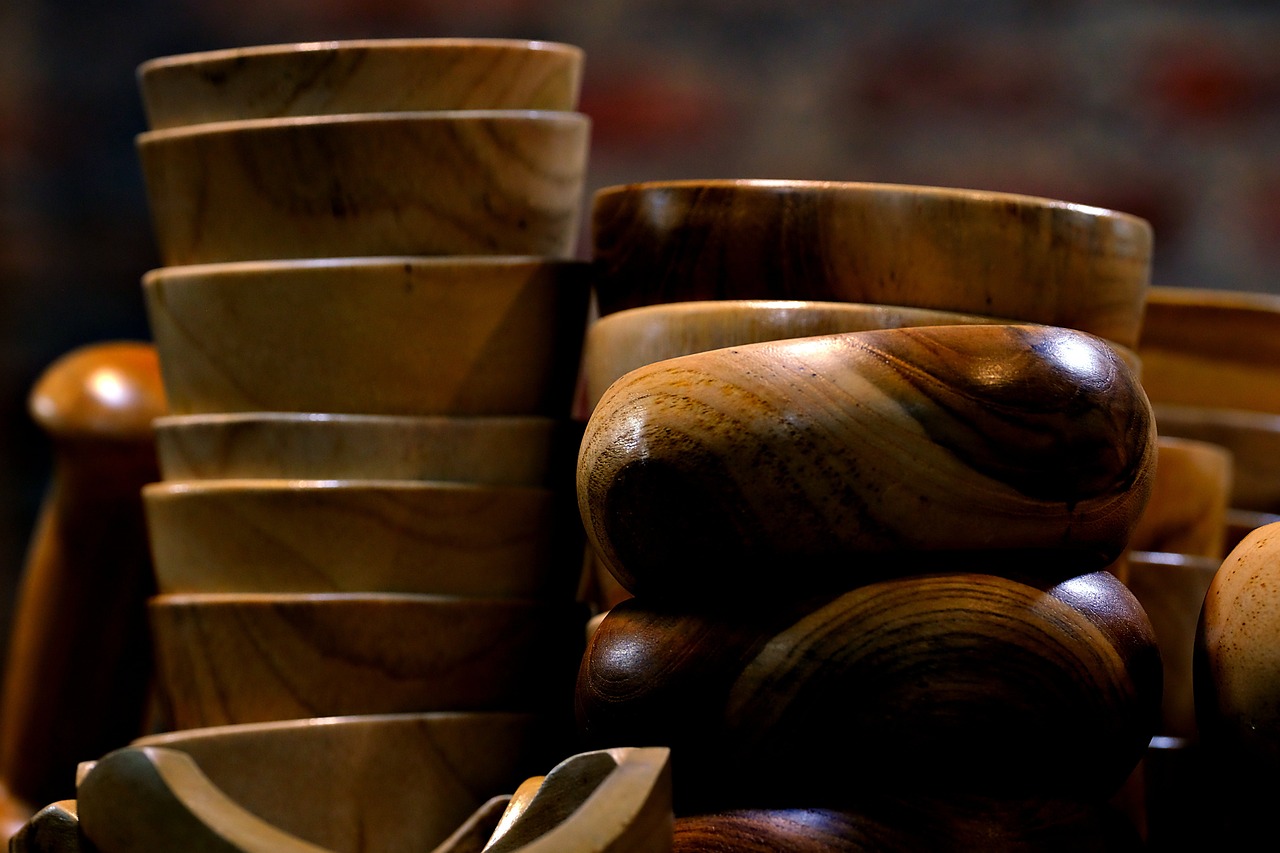
Crafting with Nature
Have you ever looked around your backyard or local park and thought about the treasures that nature has to offer? Crafting with natural materials is not only a fantastic way to spark creativity in kids, but it also fosters a deeper connection with the environment. Imagine transforming a simple leaf into a colorful piece of art or using stones to create a miniature landscape. These projects can be both fun and educational, allowing children to explore scientific concepts while engaging their artistic side.
One of the most exciting aspects of crafting with nature is the variety of materials available. Kids can collect items such as:
- Leaves: Different shapes and colors can be used for various crafts, from leaf rubbings to collages.
- Stones: Smooth pebbles can be painted or used to create patterns, while larger rocks can serve as canvases for art.
- Twigs and branches: These can be assembled into sculptures or used as frames for nature-themed collages.
- Flowers: Fresh or dried flowers can add a splash of color to any project, whether it’s a bouquet or pressed flower art.
To kickstart your crafting journey, here are a few simple yet delightful projects that incorporate natural elements:
1. Nature Collage: Gather various leaves, flowers, and twigs, and glue them onto a piece of cardboard or paper. This not only allows kids to express their creativity but also teaches them about the different types of plants.
2. Painted Rocks: Use smooth stones as canvases. Kids can paint animals, patterns, or even inspirational messages. This project encourages artistic expression while also providing an opportunity to discuss the importance of rocks in our ecosystem.
3. Twig Frames: Collect twigs and glue them together to form a frame. Kids can then insert their favorite nature photos or artwork, creating a beautiful display that showcases their creativity.
These projects are not just about making something pretty; they also provide a chance to discuss the science behind the materials. For example, while crafting with leaves, you can explain photosynthesis and how trees produce oxygen. This integration of art and science helps children grasp complex concepts in a fun and engaging way.
Moreover, crafting with nature encourages kids to observe their surroundings. It prompts them to ask questions like, “What colors do I see in the leaves?” or “How does the texture of this rock feel?” Such inquiries not only enhance their observation skills but also promote critical thinking.
In conclusion, crafting with nature is a wonderful way to combine creativity with scientific exploration. By using materials found in the environment, kids can learn about ecosystems, biodiversity, and the importance of conservation—all while having a blast creating unique art pieces. So next time you head outdoors, don’t forget to bring a bag for collecting nature’s treasures!
Q: What age group is suitable for nature crafting?
A: Nature crafting is suitable for children of all ages. Younger kids may need assistance, while older children can explore more complex projects independently.
Q: How do I ensure the materials are safe for my child?
A: Always supervise your child during crafting sessions and ensure that the materials collected are non-toxic and safe to handle.
Q: Can nature crafts be done indoors?
A: Absolutely! You can bring natural materials inside and create art projects at a table, allowing for creativity regardless of the weather.
Q: What should I do with the crafts after they're made?
A: Display them proudly! You can create a gallery wall at home or give them as gifts to family and friends, sharing the beauty of nature and creativity.
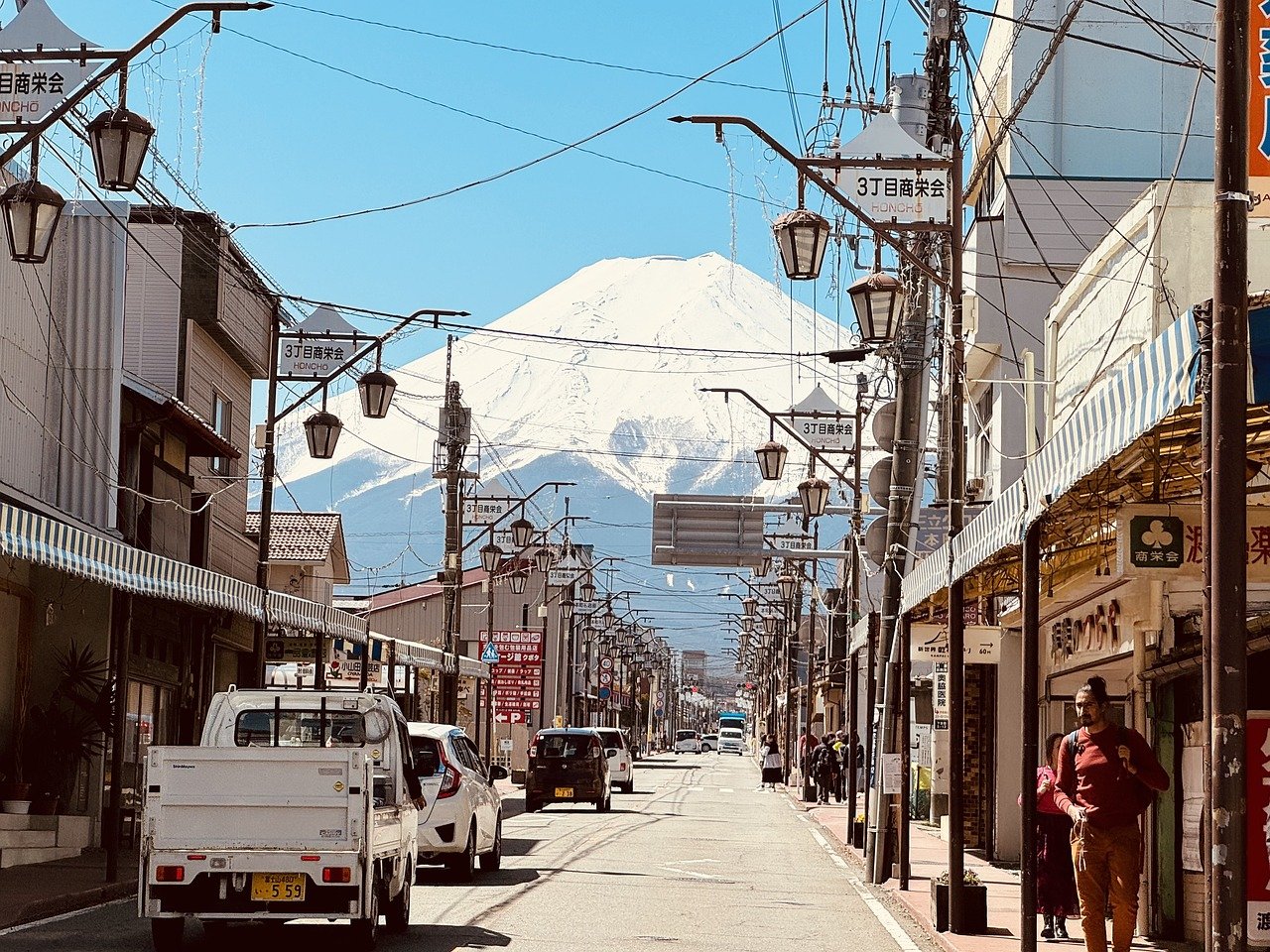
STEM-Focused Projects
In today's world, where technology and innovation are at the forefront of education, introducing kids to STEM (Science, Technology, Engineering, and Mathematics) through fun projects can ignite their curiosity and creativity. These projects are not just about following instructions; they are gateways to developing critical thinking and problem-solving skills. Imagine your child building a bridge out of spaghetti or creating a simple circuit with a battery and a light bulb. These hands-on experiences not only teach scientific principles but also encourage kids to ask questions and explore possibilities.
One exciting STEM-focused project is the homemade volcano. By combining baking soda and vinegar, kids can create an explosive reaction that simulates a volcanic eruption. This project not only demonstrates a chemical reaction but also allows children to learn about geological concepts in a fun and engaging way. To make this project even more educational, you can discuss the science behind volcanoes, including how they form and the different types of eruptions.
Another fantastic project is building a simple robot using everyday materials. Kids can use items like cardboard boxes, old toys, and batteries to create their own robotic creations. This project introduces them to basic engineering principles and encourages them to think about how machines work. As they design and construct their robots, they will learn about mechanics, electricity, and even programming if they decide to add a simple coding element.
For those interested in the world of coding, creating a simple game or animation using online platforms like Scratch can be a wonderful introduction to programming. Kids can learn to manipulate characters and create interactive stories, all while understanding the logic behind coding. This project not only enhances their technical skills but also boosts their creativity as they bring their ideas to life.
To provide a structured approach to these projects, consider using a STEM project template that outlines the objectives, materials needed, and steps involved. Here’s a simple template you can use:
| Project Name | Objectives | Materials Needed | Steps |
|---|---|---|---|
| Homemade Volcano | Understand chemical reactions | Baking soda, vinegar, food coloring, container | 1. Mix baking soda and food coloring in a container. 2. Pour vinegar over the mixture and watch it erupt! |
| Simple Robot | Learn basic engineering | Cardboard, batteries, motors, old toys | 1. Design your robot. 2. Assemble parts using glue and tape. 3. Connect the battery and test the movement. |
| Scratch Animation | Introduction to coding | Computer with internet access | 1. Open Scratch. 2. Choose characters and backgrounds. 3. Program movements and sounds. |
Engaging in these STEM-focused projects not only makes learning enjoyable but also empowers children to become innovators of tomorrow. They will learn to approach problems with a creative mindset, and who knows? You might just inspire the next great scientist or engineer!
Q: What age group are STEM-focused projects suitable for?
A: STEM projects can be adapted for various age groups, typically starting from preschool age (around 4 years old) up to middle school (around 14 years old). The complexity can be adjusted based on the child's understanding.
Q: Do I need special materials for these projects?
A: Most STEM projects can be done with common household items. However, some projects may require specific materials, which can usually be found at craft or hardware stores.
Q: How can I encourage my child to explore more STEM activities?
A: Encourage your child to ask questions and explore their interests. Provide them with resources like books, documentaries, and online courses related to science and technology. Participating together in projects can also boost their enthusiasm!
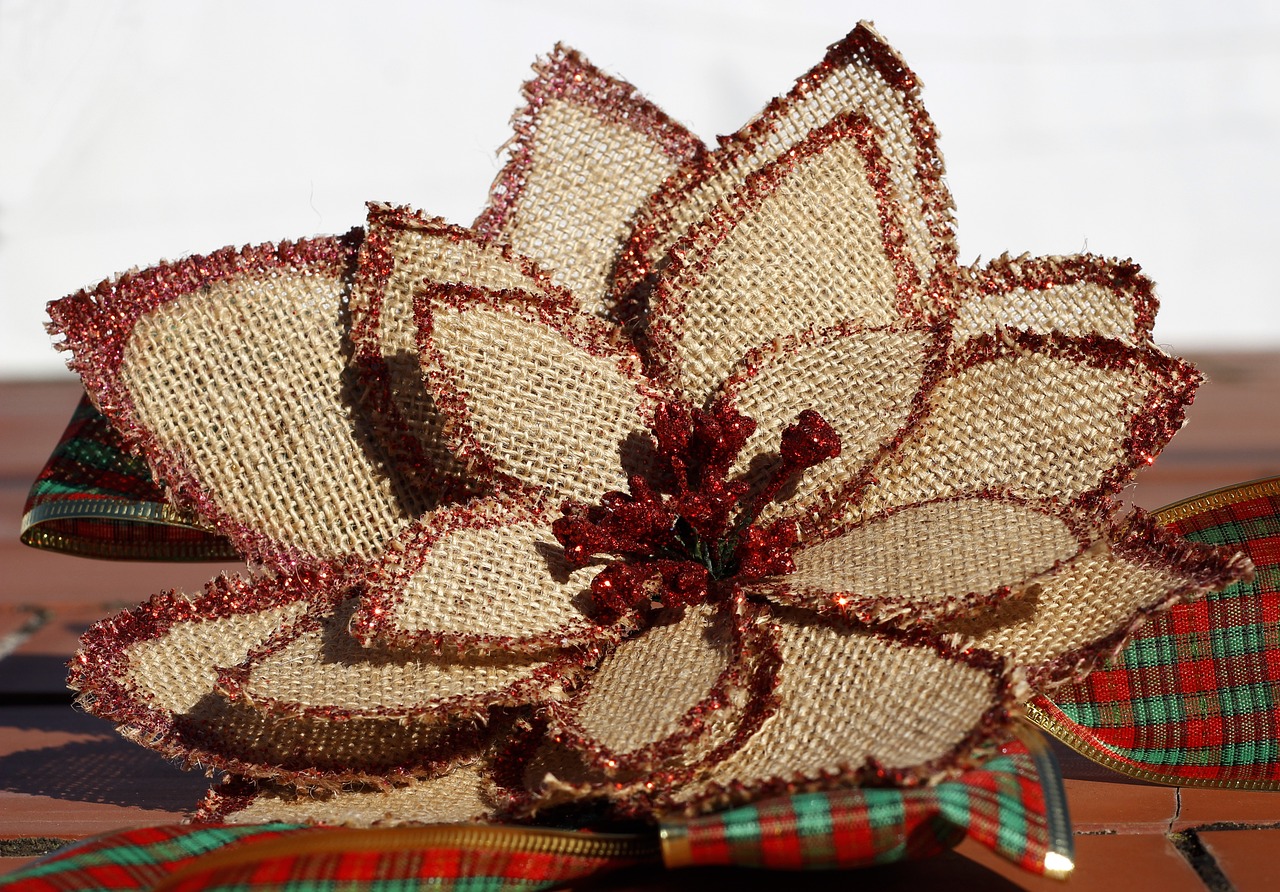
Seasonal Science Crafts
When it comes to engaging kids in learning, are a fantastic way to connect them with the changing world around them. Each season offers unique opportunities to explore scientific concepts through hands-on activities that are both fun and educational. Imagine watching your child’s eyes light up as they discover how leaves change color in the fall or how flowers bloom in spring. These crafts not only enhance their understanding of nature but also foster a sense of curiosity and wonder.
For instance, during spring, you can create a flower dissection craft. This activity allows kids to explore the anatomy of flowers, learning about the different parts such as the petals, stamen, and pistil. By using real flowers, children can engage their senses while gaining insights into plant biology. You can enhance this experience by asking questions like, “What do you think helps flowers grow?” or “How do you think bees help flowers?” This encourages them to think critically and connect their craft to real-world phenomena.
In summer, consider making a solar oven. This project is not only fun but also a brilliant way to teach kids about solar energy and temperature. Using simple materials like a pizza box, aluminum foil, and plastic wrap, children can create their own solar oven to cook s'mores or melt chocolate. It's a delicious way to demonstrate how sunlight can be harnessed for energy, and it opens up discussions about renewable resources. You might ask, “How does the sun’s energy compare to other forms of energy?” to stimulate their thinking.
As autumn rolls in, leaf rubbings can be a delightful craft. Collect various leaves and place them under a piece of paper. By rubbing crayons over the paper, kids can create beautiful leaf prints while learning about the different types of trees and their characteristics. This activity not only sharpens their artistic skills but also teaches them to observe and appreciate the diversity of nature. You could say, “Look at how each leaf has its own unique shape and color! What do you think makes them different?”
Winter brings its own set of opportunities for science crafts. One exciting project is making snowflakes using coffee filters and scissors. Kids can cut out intricate designs and learn about symmetry and geometry in the process. This craft can lead to discussions about the science of snowflakes and why no two are alike. You can ask, “What do you think happens to snowflakes when they land on the ground?” to encourage them to think about the weather and its effects on the environment.
Incorporating seasonal themes into science crafts not only makes learning enjoyable but also helps children develop a deeper connection to the world around them. By observing changes in nature, they gain insights into scientific principles like ecosystems, life cycles, and weather patterns. As you embark on these crafts, remember to keep the atmosphere light and fun, allowing children to express their creativity and curiosity freely.
In summary, seasonal science crafts are a wonderful way to enhance children's learning experiences throughout the year. They provide practical applications of scientific concepts while allowing kids to engage with their environment. So, gather your materials and get ready to explore the wonders of nature through seasonal crafts that will captivate and educate!
- What age group are seasonal science crafts suitable for? Seasonal science crafts can be adapted for various age groups, typically ranging from preschoolers to elementary school children. Tailoring the complexity of the craft and the scientific concepts to the child's age ensures an engaging experience.
- Do I need special materials for these crafts? Most seasonal science crafts can be made using common household items. Basic supplies like paper, crayons, natural materials (leaves, flowers), and recycled materials (boxes, bottles) are often sufficient.
- How can I make these crafts more educational? To enhance the educational aspect, ask open-ended questions during the crafting process, relate the activity to real-world phenomena, and encourage observation and discussion about what they are creating.

Safety Tips for Crafting
When diving into the world of science crafts with your kids, safety should always be your top priority. It's easy to get caught up in the excitement of creating something new, but a few simple precautions can ensure that the experience remains fun and injury-free. First and foremost, always supervise children during crafting activities, especially when using tools or materials that could pose a risk. This is not just about keeping an eye on them; it's about engaging with them in the process, guiding them through each step, and making sure they understand the importance of safety.
Additionally, consider the materials you're using. Some items may have small parts that can be choking hazards for younger children. Always check the age recommendations on craft kits and materials. If you're working with scissors, glue, or other potentially dangerous tools, make sure they are age-appropriate. For instance, using safety scissors for younger children can prevent accidents while still allowing them to explore their creativity. Also, opt for non-toxic materials whenever possible. This is especially important for paints, glues, and any other substances that could come into contact with skin or be ingested.
Another key aspect of safety in science crafting is ensuring a clean and organized workspace. A cluttered area can lead to accidents, so take a moment to set up a dedicated crafting zone. Cover surfaces with newspaper or a plastic sheet to protect them from spills, and keep all materials neatly arranged. This not only helps in keeping the area tidy but also teaches kids the importance of organization and responsibility in their projects.
It's also wise to prepare for any mess that might occur. Science experiments can sometimes get a bit messy, so wearing old clothes or aprons can save your children's favorite outfits from being stained. Furthermore, having paper towels or wet wipes handy ensures that you can quickly clean up any spills or accidents. Remember, the goal is to have fun while learning, and a little mess is often a part of the process!
Lastly, don't forget to discuss safety rules with your kids before starting any project. Create a simple set of guidelines that everyone can follow. For example:
- Always ask for help when using tools.
- Keep materials out of reach when not in use.
- Wash hands after handling craft supplies.
By instilling these safety habits early on, you're not only keeping your kids safe but also teaching them valuable lessons about responsibility and caution. Crafting should be a joyful experience, and with these safety tips, you can ensure that your science adventures are both educational and safe!
Q: What should I do if my child is allergic to certain materials?
A: Always check the labels on materials for allergens. If your child has known allergies, opt for hypoallergenic or natural materials whenever possible.
Q: How can I ensure my child is using tools safely?
A: Teach your child proper handling techniques and demonstrate how to use tools before letting them try. Always supervise their use of scissors, glue guns, or any sharp objects.
Q: Are there age recommendations for certain craft materials?
A: Yes, most craft supplies come with age recommendations. Always adhere to these guidelines to ensure safety for your child.
Q: How can I manage the mess that comes with crafting?
A: Set up a designated crafting area with protective coverings, and have cleaning supplies readily available. Encourage your child to clean as they go to minimize mess.

Encouraging Creativity in Science
When it comes to , the possibilities are as vast as the universe itself! Science crafts are not just about following instructions; they are about sparking imagination and allowing children to explore their own ideas. Just think about it: when kids engage in hands-on activities, they don't just learn about scientific concepts—they also develop their own unique interpretations of those concepts. This fusion of creativity and science can lead to some truly amazing discoveries!
Imagine a young scientist, excitedly mixing colors to create a vibrant volcano eruption. As they watch the fizzy reaction unfold, they're not just seeing a chemical reaction; they're also experimenting with color theory and cause-and-effect relationships. This is where the magic happens! By allowing children the freedom to experiment, you encourage them to ask questions, explore possibilities, and ultimately, develop their own understanding of the world around them.
One effective way to foster this creativity is through open-ended projects. Instead of providing a strict set of guidelines, give kids a theme or a scientific principle and let them take the reins. For instance, if you're exploring the concept of buoyancy, you might challenge them to create their own floating device using various materials. This not only teaches them about density and buoyancy but also encourages them to think critically and creatively about how to solve problems.
Moreover, integrating art into science crafts can significantly boost creativity. By incorporating elements like painting, sculpting, or even digital design, children can express their scientific ideas in visually stunning ways. For example, after conducting a simple experiment on plant growth, kids could create a colorful poster showcasing their findings, complete with drawings and descriptions. This not only reinforces their learning but also allows them to present their work in a way that is uniquely theirs.
Additionally, it’s essential to create a supportive environment where kids feel safe to express their thoughts and ideas. Encourage them to share their projects with family and friends, fostering a sense of pride in their work. This can be done through informal science fairs at home or community events where children can showcase their creations. When kids see that their efforts are valued, it boosts their confidence and motivates them to continue exploring and creating.
In conclusion, encouraging creativity in science is all about embracing the process of exploration and expression. By providing children with the tools, freedom, and support they need, we can inspire the next generation of thinkers, innovators, and problem solvers. Remember, the goal is not just to teach science but to ignite a lifelong passion for learning and discovery!
- How can I encourage my child to be more creative in science? Allow them to explore projects without strict guidelines and provide them with a variety of materials to work with.
- What are some simple science crafts I can do at home? Activities like creating a volcano with baking soda and vinegar or making slime can be fun and educational.
- Why is creativity important in science education? Creativity fosters critical thinking and problem-solving skills, which are essential for understanding scientific concepts.
Frequently Asked Questions
- What are science crafts?
Science crafts are fun activities that combine artistic creativity with scientific principles. They allow kids to engage in hands-on learning, making complex concepts easier to understand while having a blast!
- Why are science crafts important for kids?
These crafts not only entertain but also enhance critical thinking and problem-solving skills. They encourage curiosity and exploration, helping children connect with the world around them.
- What materials do I need for science crafts?
You can use a variety of materials such as paper, glue, scissors, natural items like leaves and stones, and basic science supplies like baking soda and vinegar. The key is to be creative and resourceful!
- Can I do science crafts with my young children?
Absolutely! Many science crafts are designed for young children, and they can be great bonding activities. Just ensure you supervise them, especially with materials that might be a bit tricky.
- What are some examples of simple science experiments that can be turned into crafts?
Examples include making a volcano with baking soda and vinegar, creating a rainbow with a glass of water and a flashlight, or building a simple circuit with a battery and a light bulb. Each of these can be crafted into a fun project!
- How can I incorporate nature into science crafts?
Using natural materials like leaves, twigs, and stones can enhance the learning experience. Kids can create leaf rubbings, rock sculptures, or even a nature journal to document their findings!
- What are STEM-focused projects?
STEM projects emphasize the integration of science, technology, engineering, and mathematics. They involve problem-solving and critical thinking, such as building a bridge from popsicle sticks or creating a simple machine.
- Are there seasonal science crafts I can try?
Definitely! Seasonal crafts can include making a snowflake out of paper for winter, growing seeds in spring, or creating a leaf collage in autumn. Each season offers unique opportunities for learning!
- What safety tips should I follow during science crafts?
Always supervise children, especially when using sharp tools or potentially hazardous materials. Ensure they wear protective gear if needed and work in a well-ventilated area when using glue or paints.
- How can I encourage creativity in my child's science projects?
Encourage open-ended questions and allow them to explore their ideas. Provide various materials and let them experiment without strict guidelines. Celebrate their creativity, no matter the outcome!



















